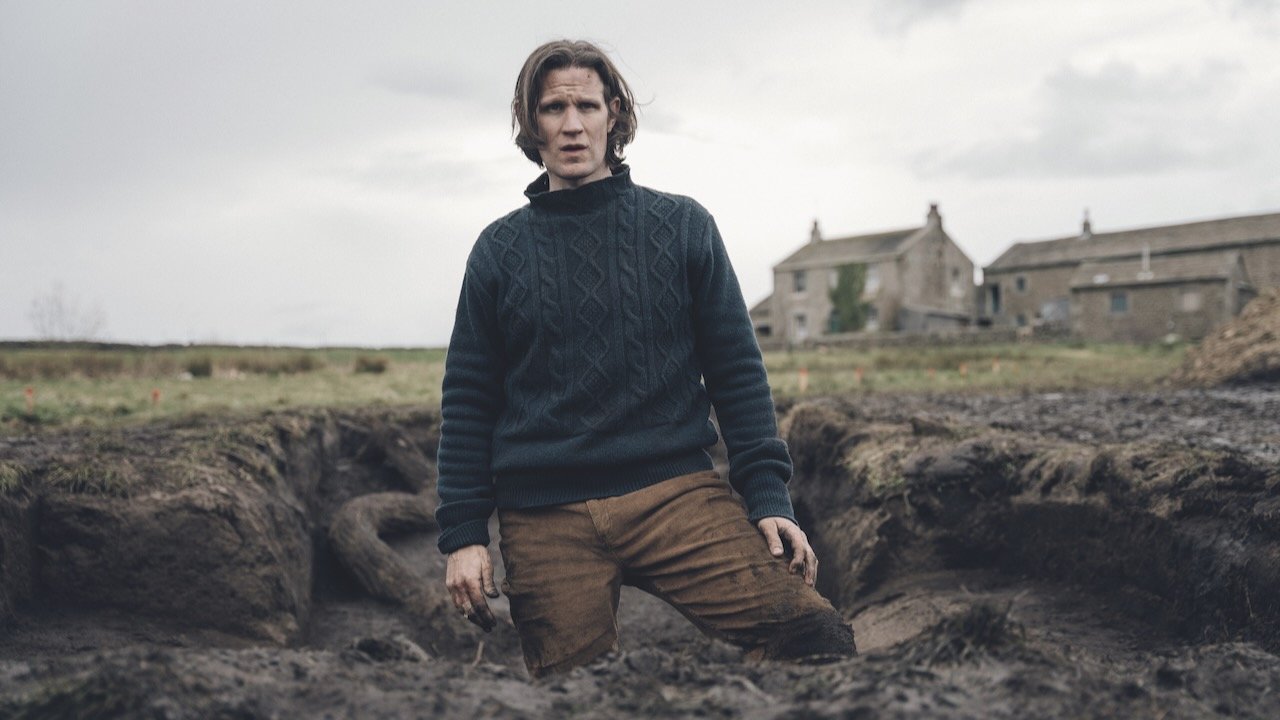In Starve Acre, director Daniel Kokotajlo delivers a haunting, slow-burning folk horror adaptation of Andrew Michael Hurley’s novel. Set in 1970s Yorkshire, the film stars Matt Smith and Morfydd Clark as a grieving couple whose lives unravel as they encounter ancient, malevolent forces lurking beneath their home. Despite its strong performances and eerie atmosphere, Starve Acre ultimately falls short of being truly memorable, bogged down by overfamiliarity and an absence of genuine terror.
The story follows Juliette (Clark) and Richard (Smith), a couple grappling with the recent loss of their son, Owen. Richard, an archaeologist, becomes obsessed with an old oak tree supposedly buried in the field outside their house. Meanwhile, Juliette turns to supernatural means in search of closure, sinking deeper into eerie rituals and arcane practices. While grief as a theme in horror is nothing new, the film explores it in ways that are emotionally unsettling, even if it never quite manages to be terrifying.
Kokotajlo’s direction builds a suffocating atmosphere, with slow zooms, muted tones, and misty Yorkshire moors that evoke the gothic isolation of the couple’s rural surroundings. The oppressive tension is palpable, aided by Matthew Herbert’s ethereal, breathy score, which adds a layer of unease to every scene. The film’s strongest moments lie in its visuals—whether it’s the unsettling spectacle of a preserved rabbit skeleton mysteriously coming back to life or the brooding landscape that looms over the couple like a silent witness to their unravelling.
Yet for all its visual flair and immersive world-building, Starve Acre falters in its pacing and execution. The slow burn that promises dread too often lingers in gloom without delivering the scares that folk horror can so effectively conjure. While the film’s themes of grief and loss echo through every frame, the narrative gets bogged down in overly familiar tropes. Elements of pagan folklore, supernatural hauntings, and disturbed children are staples of the genre, but here, they feel too predictable to generate genuine tension.
The performances from both leads are commendable, especially Morfydd Clark, who channels the eerie intensity that made her a standout in Saint Maud. Her portrayal of a mother on the edge is convincingly unsettling, and her descent into occult rituals brings a creeping horror that is disturbing, if not outright scary. Matt Smith is equally compelling as Richard, whose academic obsession with digging up the past takes on increasingly disturbing dimensions. Yet, despite their strong performances, the script struggles to balance their personal tragedies with the mythological menace that surrounds them.
One of the film’s more intriguing aspects is its treatment of folklore and rural mysticism. Richard’s excavation of a buried tree and Juliette’s engagement with local spiritualists hint at deeper, older forces at work beneath the surface of the story. But where Starve Acre could have fully leaned into this rich vein of folklore, it feels oddly restrained. It misses the darkly playful, sinister edge that classics of the genre like The Wicker Man so expertly delivered. Instead, it feels overly serious and unwilling to explore its own weirdness with the boldness it deserves.
In the end, Starve Acre is an atmospheric and visually arresting film that excels at creating a mood of oppressive dread. But despite its technical achievements and strong performances, it lacks the emotional punch and visceral horror that the best of the folk-horror genre offer. For fans of slow-burn gothic horror, it may still hold appeal, but its brooding tone never quite escalates into the bone-chilling terror one might expect.





















